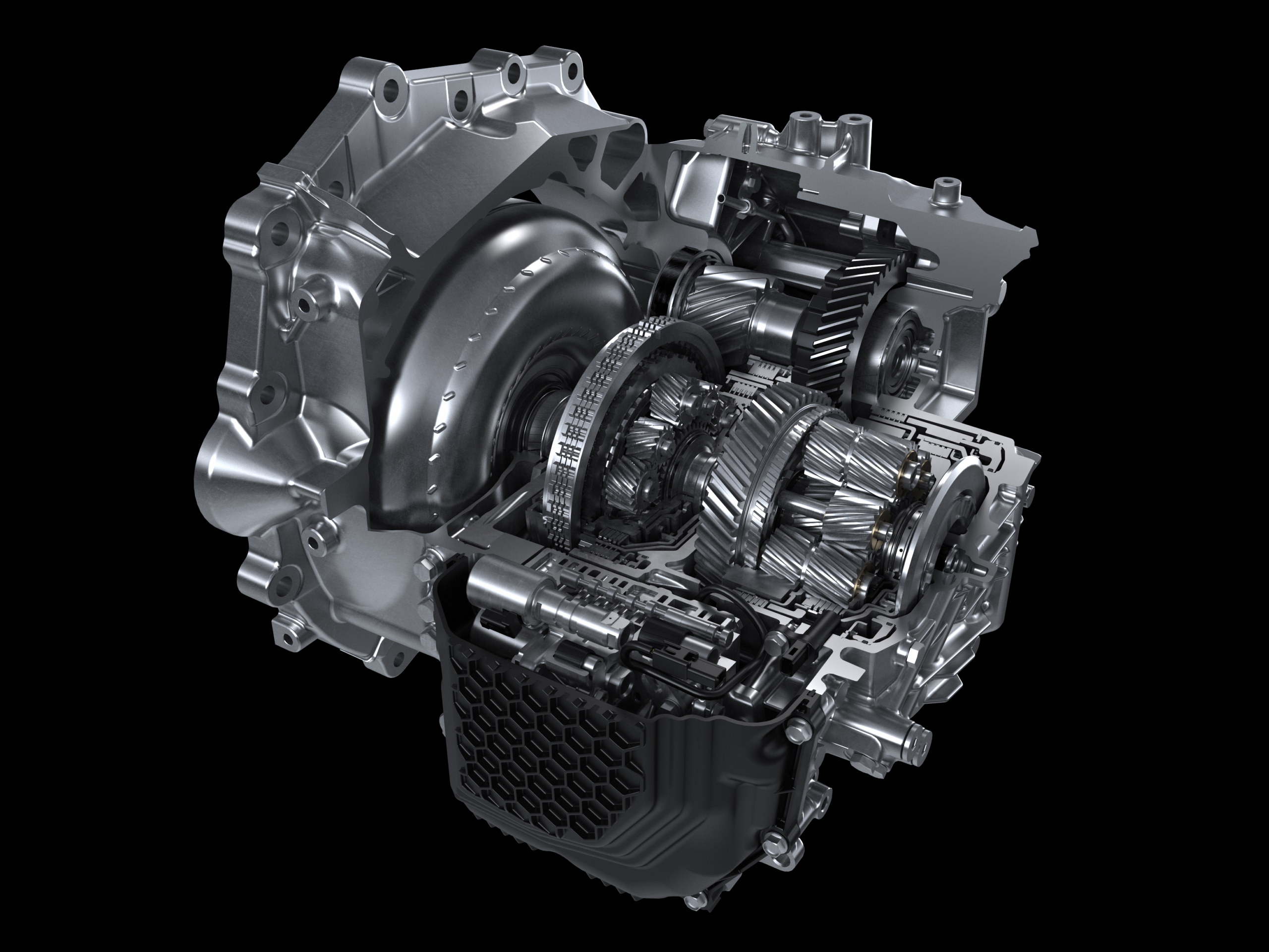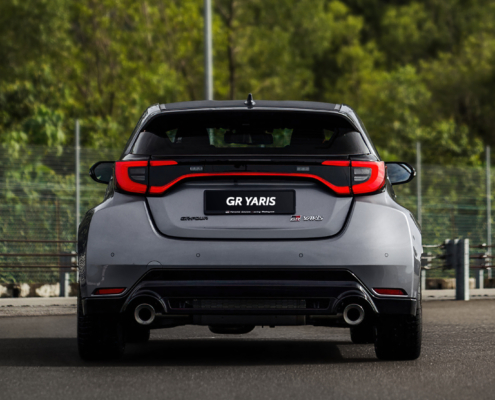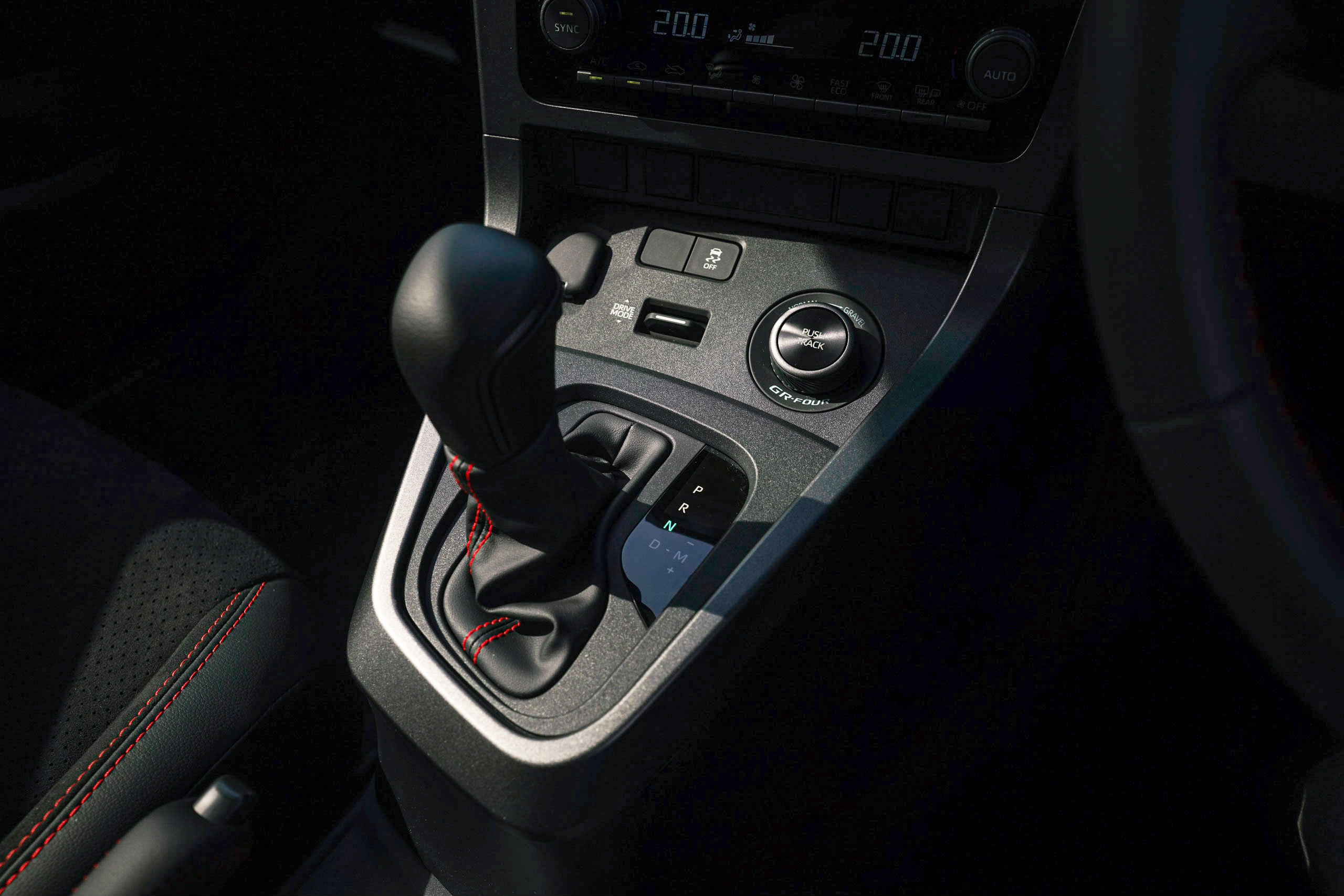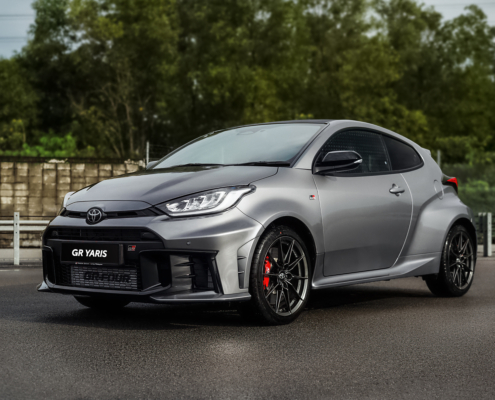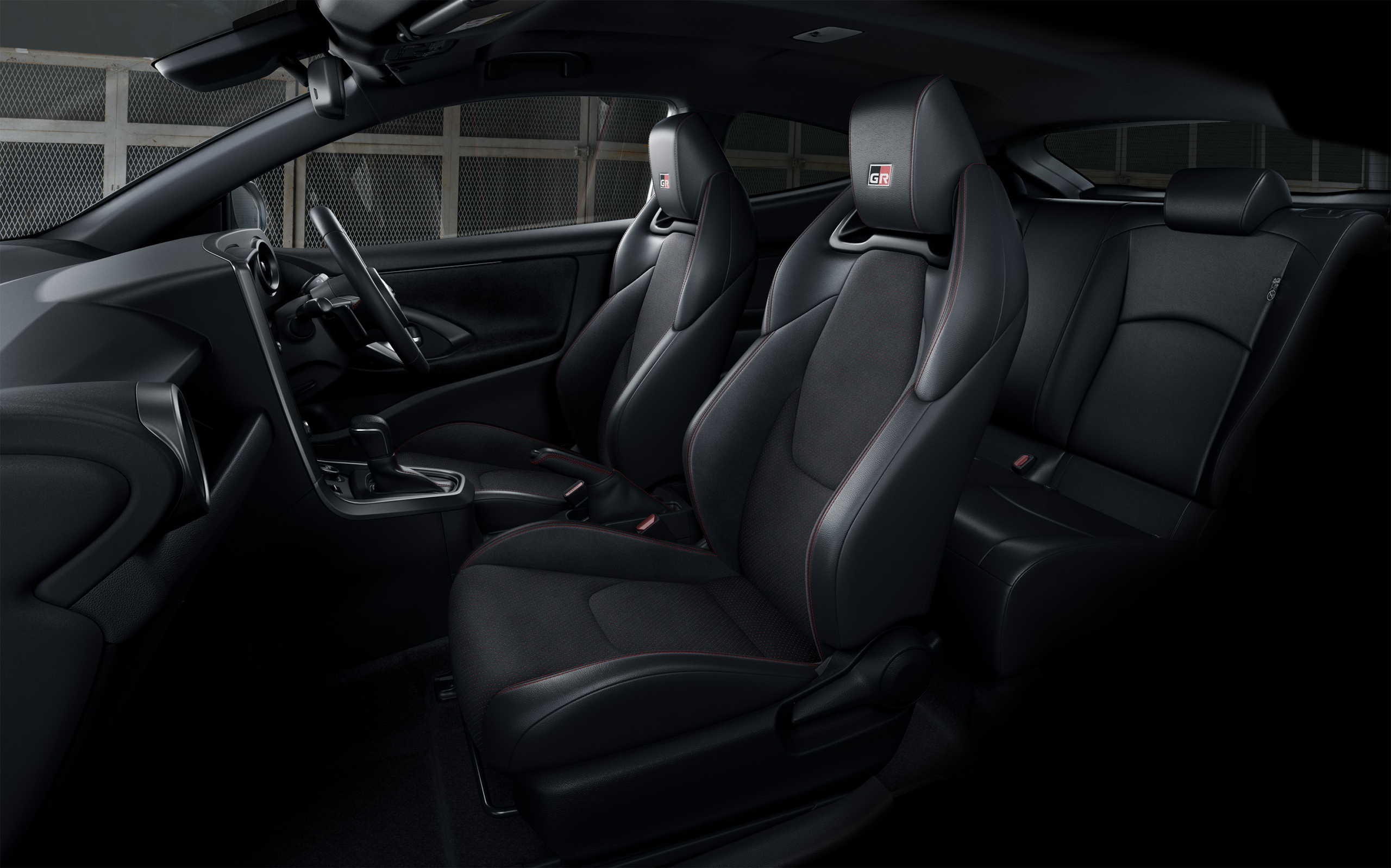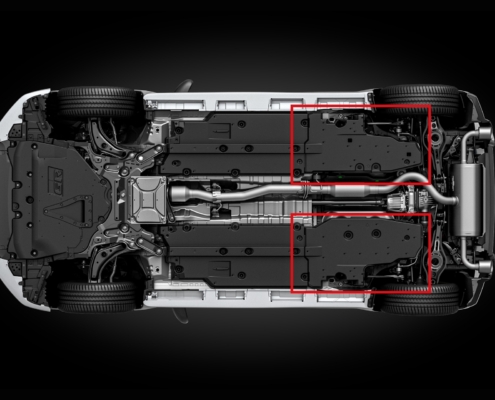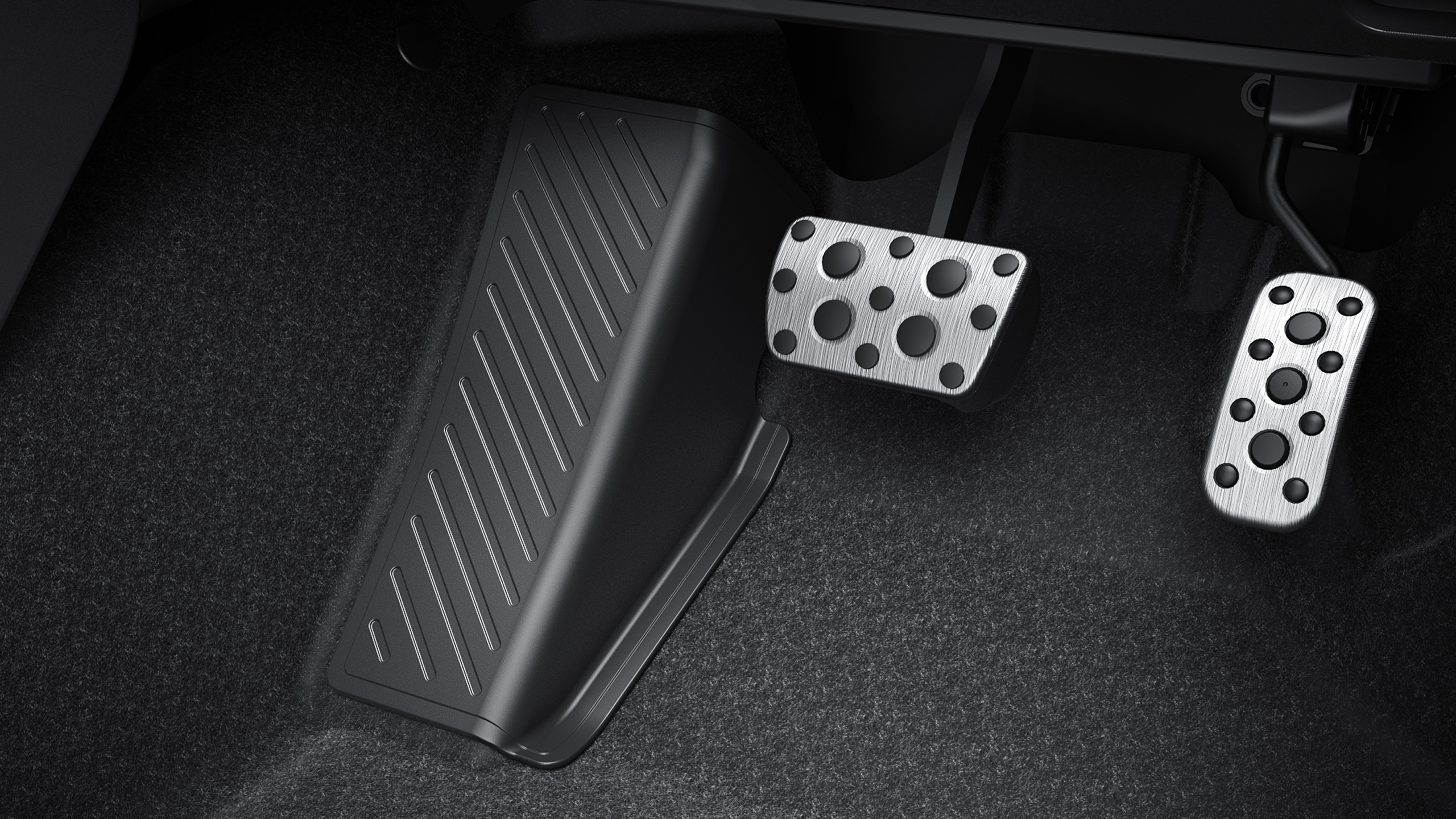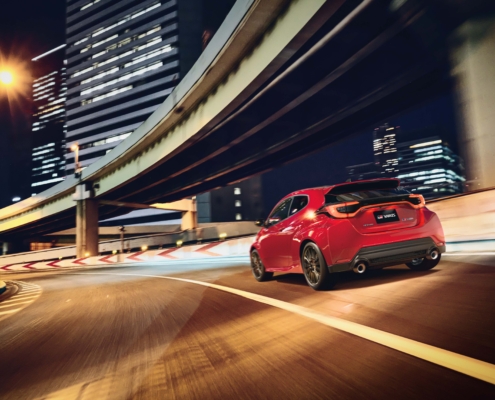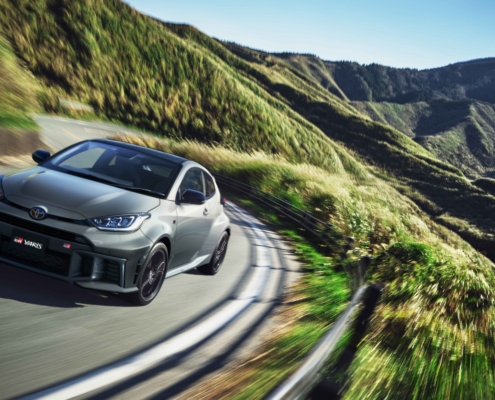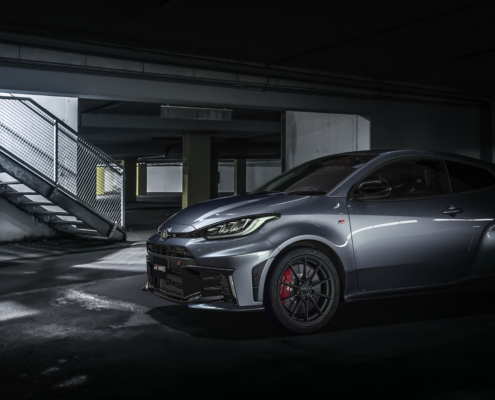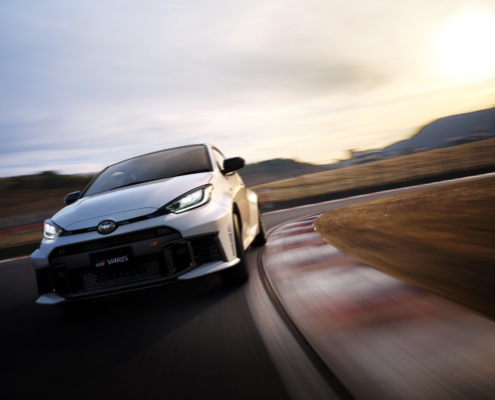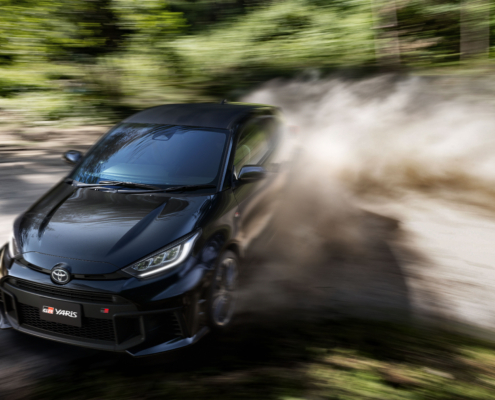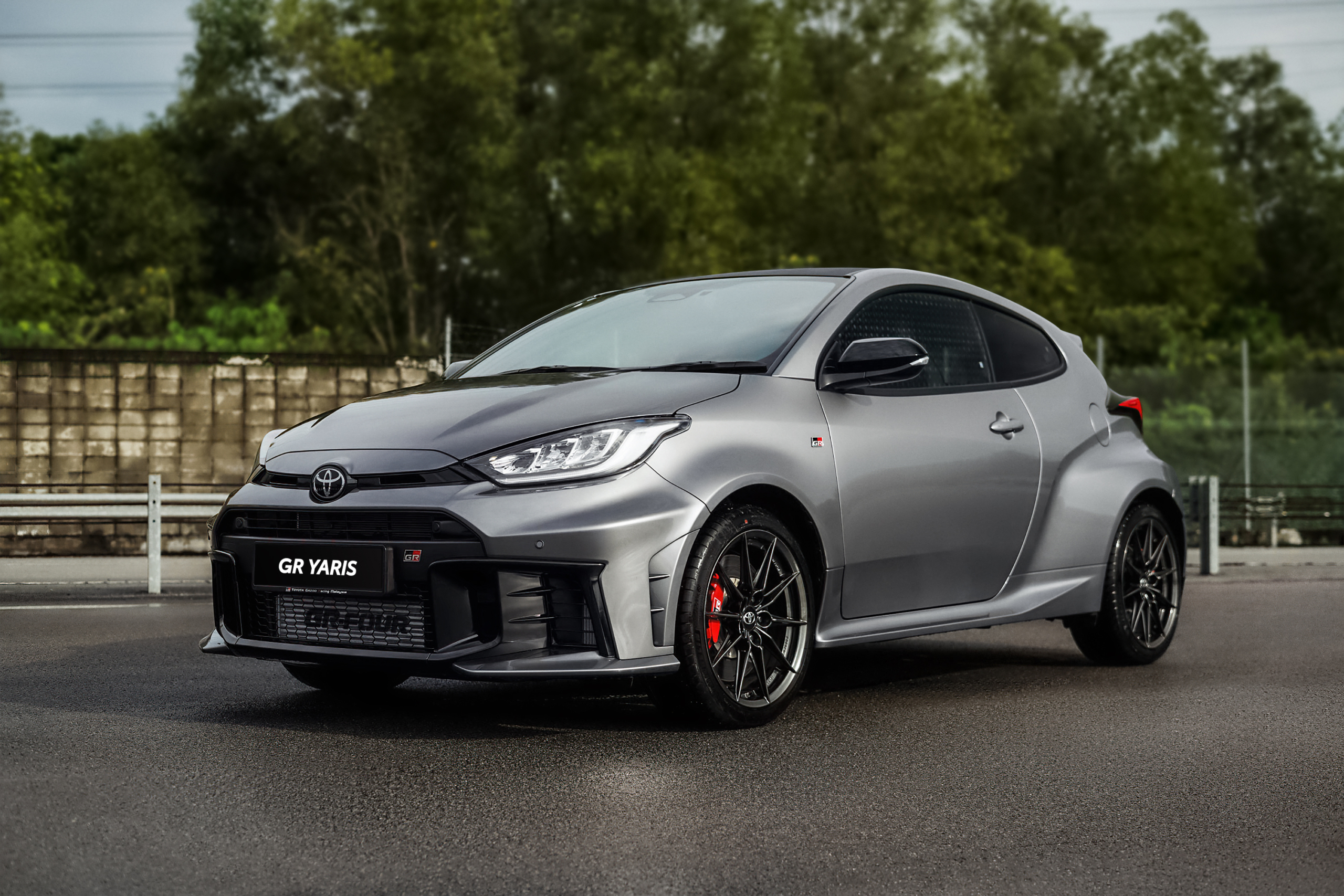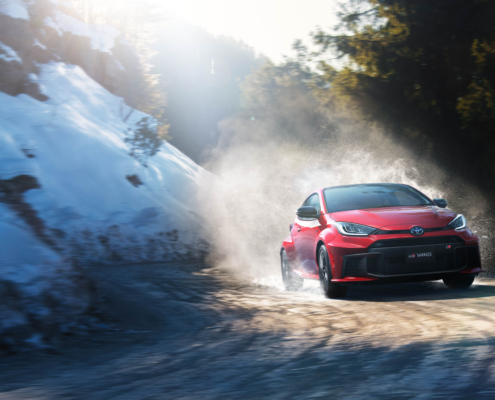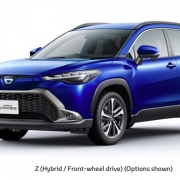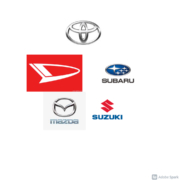2025 GR YARIS – Now with 8-speed GAZOO Racing Direct Automatic Transmission
 Following the launch of the 2025 GR Yaris in January this year, UMW Toyota Motor now offers an additional variant with an 8-speed GAZOO Racing Direct Automatic Transmission as a complement to the variant 6-speed Intelligent Manual Transmission (iMT).
Following the launch of the 2025 GR Yaris in January this year, UMW Toyota Motor now offers an additional variant with an 8-speed GAZOO Racing Direct Automatic Transmission as a complement to the variant 6-speed Intelligent Manual Transmission (iMT).
With the new 8-speed automatic transmission, a wider range of people can enjoy fun and sporty driving. As with all GR high-performance vehicles, the transmission has been developed and tested in motorsport conditions to ensure that it is durable and reliable as part of Toyota’s quest to provide ever better cars.
The 2025 model has all the improvements of the Improved GR Yaris which has evolved since its original introduction in 2021. These include design changes on the bodywork, increased output from the 1.6-litre turbocharged engine, a new cooling package and enhanced suspension durability and handling.
Main improvements:
- Increased engine output.
- Standard Cooling Package
- New front and rear design
- Driver-First Cockpit layout
- Enhanced suspension durability and handling
- New exterior colour (Precious Metal)
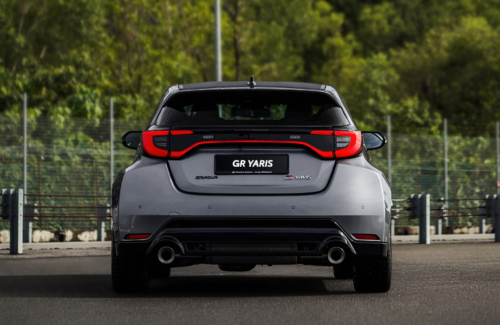
8-speed GAZOO Racing Direct Automatic Transmission
The development of the new 8-speed GAZOO Racing Direct Automatic Transmission (GAZOO Racing DAT) involved extensive testing in many different conditions with various road surfaces. Drivers of the TGR World Rally Team also drove prototype GR Yaris models with the transmission and provided feedback to engineers for improvements.
Through these and other efforts in which not only professional but also amateur drivers played roles in the repeated process of ‘breaking and fixing’, GAZOO Racing engineers achieved transmission speed and reliability that will be appreciated by enthusiasts.
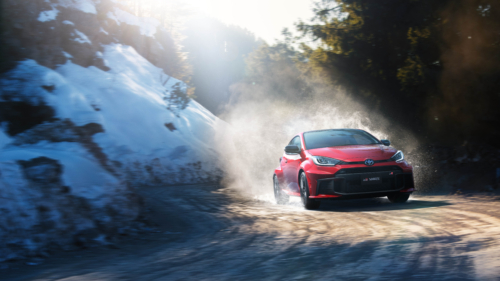
The GAZOO Racing DAT’s control software has been optimised for engaged driving. Unlike the GR Supra and GR86 automatic transmissions where gear shifting relies on sensing vehicle behaviour (such as deceleration g-force and speed), the GAZOO Racing DAT’s software monitors the way the driver steps on the brakes and operates the accelerator. With these inputs, it anticipates when gear shifting is optimal even before changes in vehicle behaviour occur, achieving gear selection that reflects the driver’s intentions and, thus, leads to shifting that is similar to that of professional drivers.
The GAZOO Racing DAT also allows drivers to focus more on acceleration/brake and steering manoeuvres, so non-professional drivers may be able to drive faster if they decide to go racing on a track. Enhancements to the transmission’s control software have resulted in world-class gear-shifting speeds.
Responsiveness during sporty driving has been increased by expanding the vehicle speed range for downshifting (2nd gear to 1st gear) when downshifting via the paddle shifter while driving in the D range. This shortens the time between paddle operation and the start of gear shifting, improving the sense of directness near the redline when selecting SPORT in manual mode.
The development team used circuit and rally driving courses as a basis for setting the GAZOO Racing DAT’s close gear ratios (made possible by increasing the number of gears). They optimised the shift points of the transmission, giving similar ratios to the 6-speed iMT that maximise delivery of engine power and torque to the wheels and enables optimal performance. Even casual highway driving has an energetic feel, due to the 8-speeds optimising engine speed while at cruising speeds.
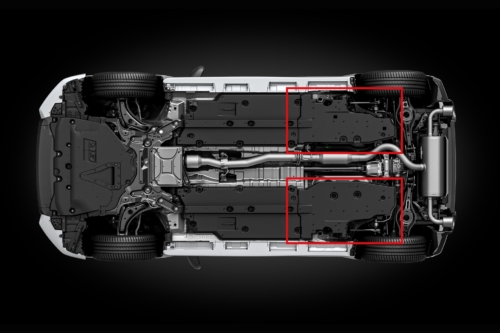
The 1.6-litre 3-cylinder turbocharged engine
With the increasing competitiveness of rivals, GAZOO Racing decided to increase the output of the 1.6-litre 3-cylinder DOHC 4-valve turbocharged engine (G16E-GTS) of the GR Yaris. Already a high output engine, the power was increased by 19PS and 30Nm of torque, with maximum figures now at 300PS and 400Nm. This improves acceleration time from 0 – 100 km/h to 5.2 seconds with a governed top speed of 230 km/h.
Despite the higher output, durability has not been compromised. Incorporating motorsport technology developed for extreme conditions as well as new materials ensures durability. The pressure in the D-4ST fuel injection is also higher while a new intake pressure sensor has been added. There is also a larger exhaust pipe designed to reduce back pressure by 40% to contribute to the high engine output.
As with the GR Yaris with 6-speed iMT launched earlier, UMWT has also included the cooling package as standard (it is optional in some countries). A cooler engine can provide sustained high performance even in hot weather conditions, important during intense competition conditions.
The cooling package consists of a sub-radiator, cold air intake duct, intercooler spray and NACA Duct undercarriage cover. With the additional cold air intake duct design, less hot air is drawn from the inside of the engine compartment. The Intercooler spray is activated by a switch on the instrument panel before performance driving, with the intermittent operation set to 150s based off actual competition time. For the GR Yaris with 8-speed GAZOO Racing DAT, there is also a cooler for the automatic transmission fluid.
Drive Mode Select
The new Drive Mode Select with Eco, Normal, Sports and Custom modes is available to provide a balance of easy controllability in both motorsports driving and daily driving situations. While being a minor change model, the electronic platform has been changed to enable the installation of Drive Mode Select.
For the GR Yaris with the GAZOO Racing DAT, the shift feel and selection are a bit different. Shift feel is response-oriented in SPORT mode and has a balance between shock and response in Normal and Eco modes. In SPORT mode, response is prioritised in the D range, while using M range ensures the quickest shifting. The driver will find that working within the rev band from 4,900 rpm to the 7,200 rpm redline extracts maximum engine performance.

GR-Four AWD System
The all-wheel drive system in the GR Yaris can trace its roots back to the Group B Celica rallycars of the 1980s. The latest GR-Four AWD system has been improved with a new Gravel mode and updated Track mode. In Gravel mode, there is 53:47 front to rear distribution while Track Mode continuously varies the drive force distribution in accordance with the driver’s operations and the car’s dynamics. This variation can go from 60:40 to 30:70 to maintain optimum grip and stability on all kinds of surfaces.
The drive system’s ECU provides linear control of drive torque distribution, in line with the driving situation, responding to vehicle information including vehicle speed, acceleration and brake pressure. The system also uses an electronically controlled multi-plate clutch, operating according to data from sensors measuring wheel speed, g-forces and clutch temperature.
The drivetrain includes Torsen Limited Slip Differentials at the front and rear, and Launch Control is available for the GR Yaris with GAZOO Racing DAT.

Bespoke TNGA
With the bespoke TNGA (Toyota New Global Architecture), the GR Yaris has excellent body rigidity. The platform was purpose-designed for the car, combining the front section of the Yaris’ GA-B structure and a new rear end derived from Toyota’s larger GA-C platform. The bodyshell is unchanged, with the roof made from a lightweight forged (rather than woven) carbon compound material.
Aluminium is used for the bonnet and doors, saving weight and helping lower the car’s centre of gravity. Thin-sheet steel is used in the wings and side members, with light and strong high-tensile steels in critical areas to ensure the car’s structure can safely absorb and dissipate impact forces.
To handle harder driving conditions, the number of bolts fastening the body to the shock absorbers has been increased from one to three to suppress alignment changes during driving, thereby increasing the responsiveness of vehicle behaviour to steering operation and improving handling stability.
By increasing the number of spot welding points by approximately 13% and expanding the areas where structural adhesive is applied by approximately 24%, body rigidity has been increased to improve handling stability and ride comfort.
Performance-tuned suspension
The light but rigid suspension systems – front MacPherson struts and rear double wishbones with trailing arms – have been improved for 2025. Changing from single to triple points for fastening the shock absorbers suppresses changes in alignment, increasing durability for performance driving. The front and rear springs have also been optimised to be stiffer to improve handling and responsiveness.
Besides the performance-tuned suspension, the Performance Pack of the GR Yaris includes 18-inch BBS forged alloy wheels and Michelin Pilot Sport 4S tyres as standard.
Exterior changes
The exterior changes that have been made to the Improved 2025 GR YARIS are far from than just cosmetic. Every element has been revised to achieve optimum downforces, aerodynamics and grip.
The front end of the new evolved version, referred to as “Functional MATRIX Ver.2”, is an aggressive and more functional design. It consolidates the radiator and brake ducts, while the front grille now has a steel mesh to be finer, giving an enhanced opening balanced with strength. There are also openings for the side grilles and ducts to provide air for the sub radiator and brakes. The bumper corners have been shaped to produce a downforce effect and more effective airflow around the tyres.
The Split Construction of the front bumper is a Toyota-first feature. It has been adopted so it can be quickly reinstalled using the spare construction and at lower cost. This also makes it easier for third-party parts to be developed, expanding the possibilities for user customisation.
At the rear, the changes improve the GR Yaris in motorsport use and also to make it recognisable as the ‘new GR Yaris’. The rear spoiler has been matched with the body colour, creating a low stance and a sleek silhouette. An opening in the bottom edge of the lower garnish allows air from beneath the floor to escape, reducing drag, improving the car’s manoeuvrability and stability and dispersing heat from the exhaust system.
The red parts of the rear combination lamps have been enlarged to the rear door side and connected laterally, emphasising the wide impression. The mufflers have also been moved lower and further outward to create a wide and low stance.
The fog and reversing lights have been relocated, moving from the lower bumper to be integrated in the rear combination lamps, reducing the risk of damage. Similarly, the high-mounted stop light has been moved from the rear spoiler to lower down on the back door so that all rear lamps are aligned and in a clear line of sight for following drivers. Moving the stop light also makes it easier for the spoiler to be changed or customised.
Authentic ‘driver-first’ cockpit
The Improved GR Yaris maintains the authentic sporty feel of a driver’s cockpit with an interior layout that’s true to the ‘driver first’ principles that define the car. As with the development of the rest of the car, professional drivers, especially those from the GAZOO Racing teams, provided suggestions for improvements in control positions to give the driver faster, clearer access.
Controls that often need to be used in competition driving, such as intercooler spray, VSC-OFF and hazard lights have been moved closer to the driver so they can be reached quickly and easily when using a racing harness. On the passenger side, the new tray is larger so there is space for extra meters or a co-driver’s monitor to be fitted.
Precise changes have been made to give the driver the best posture. The seat has been lowered by 25 mm and steering wheel adjusted accordingly. The shift direction has been changed to suit competition driving so the driver pushes the lever forward for downshifts and pulls back for upshifts.
The driver’s field of vision from the wheel has been improved by lowering the top edge of the instrument panel by 50 mm, changing the position of the rearview mirror and angling the control panel 15 degrees further towards the driver.
The instrumentation includes a new 12.3-inch GR Full TFT display with two layout modes – Normal and Sport, the latter providing a sports performance-focused data display. The presentation is clean with clear graphics so information can be instantly viewed and understood. On the GR Yaris with GAZOO Racing DAT, the read-out includes transmission oil temperature and a visual warning in addition to a sound alarm to alert the driver when engine revs are too high for downshifting.
For daily use, the console cupholder and rear pocket have been redesigned to accommodate a wider range of items, along with a removable separator for extra functionality. Black leather with BRIN NAUB upholstery (with red stitching) has been adopted on the main parts of the sports bucket seats. This is an artificial nubuck that has higher quality than suede. It is also more elastic and stretchable than suede, giving a refined ambience in the cabin.
Toyota Safety Sense
The Improved GR Yaris comes with the latest driver assist system known as Toyota Safety Sense (TSS3). With the third generation of this active safety suite, advancements have been made which enhance the functions.
TSS3 consists of a Pre-Collision system (PCS) which includes Pre-collision Brake Assist for motorcycles and Pre-collision Brake for Oncoming Vehicles. The Dynamic Radar Cruise Control (DRCC) with enhanced distance setting, is now linked to the turn signals and functions with Deceleration Assist. It has support for preventing overtaking in hazardous situations as well as considers not just the vehicle directly ahead but also the one in front of it. Curve speed reduction allows safer negotiation of gentle corners while DRCC is active.
Lane Tracing Assist (LTA) is useful for long journeys as it maintains the path of the car within the lane. In this way, the driver does not have to constantly make inputs to the steering wheel as the slight adjustments needed will be done by the TSS3 system.
The Vehicle Stability Control (VSC) system has an EXPERT mode which allows for sportier driving without tally disabling the VSC. It is available in Track and Sport modes and is recommended for use only by experienced drivers.
WARRANTY/AFTERSALES SUPPORT
Each GR Yaris from GR Garage dealerships (which offer the GR models exclusively) comes with a 5-year unlimited mileage warranty. Full aftersales support, including genuine parts, is available at these specialist dealerships which also sell GR high performance products and GR merchandise.
Visit www.toyota.com.my and Move Your World.


